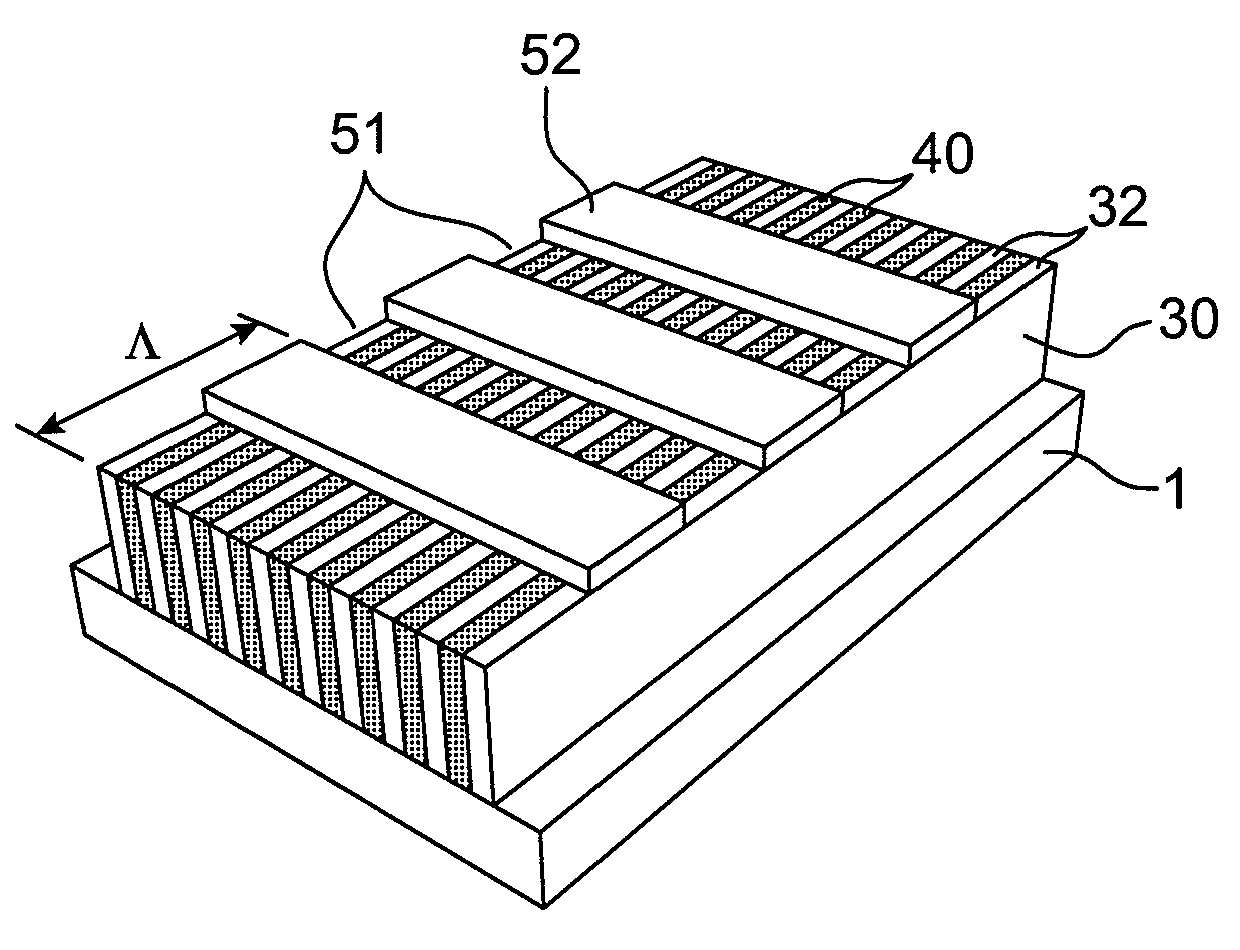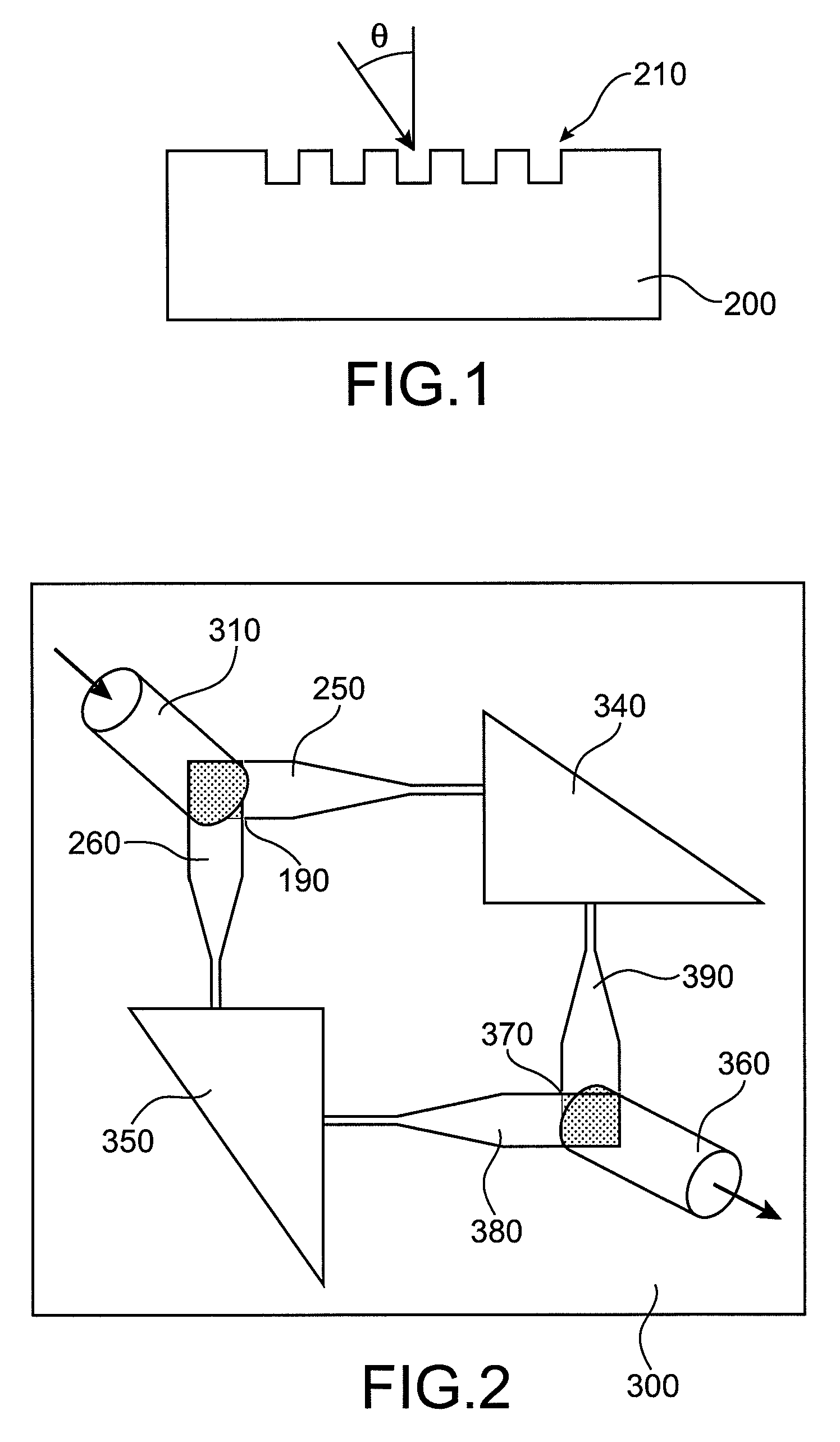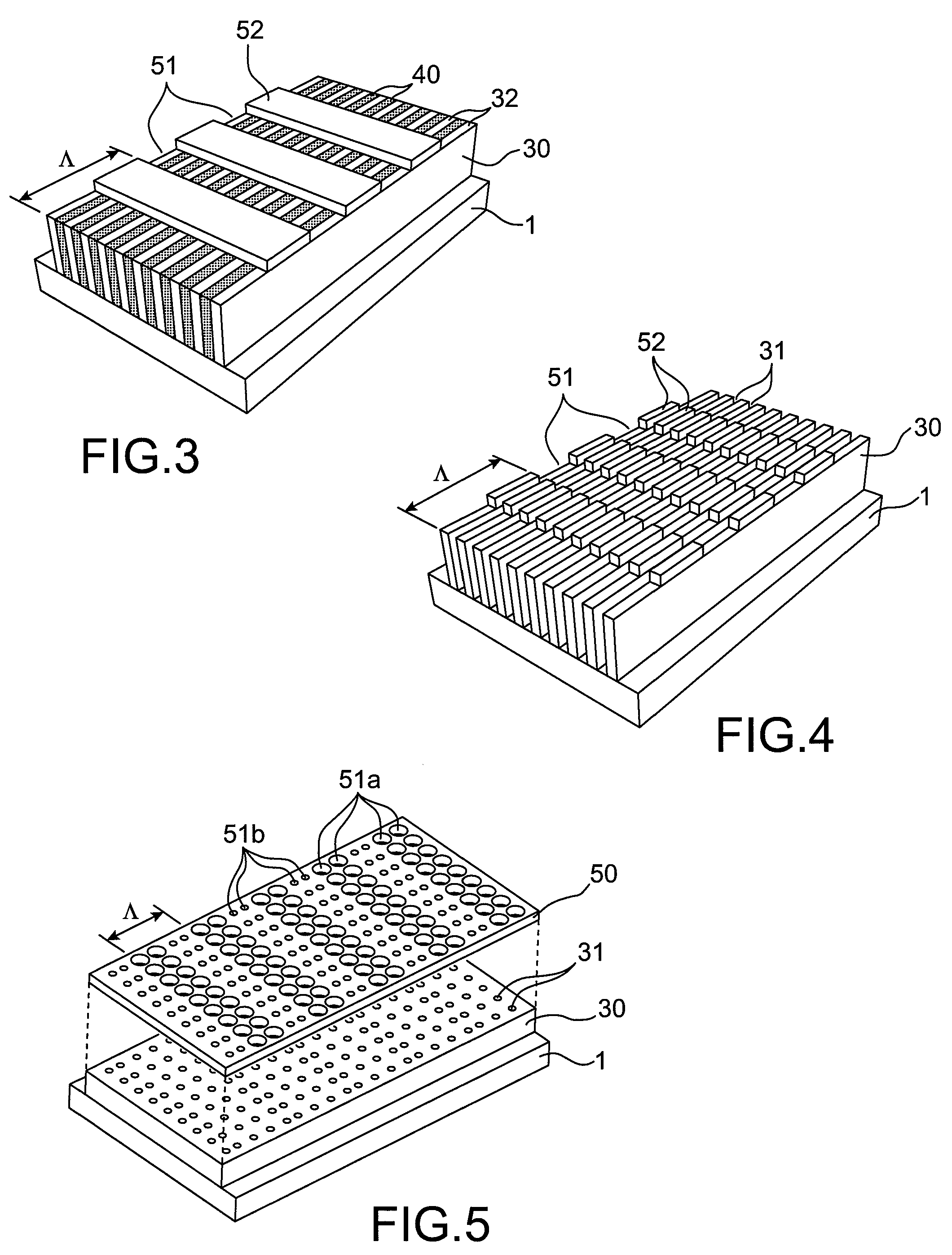Coupling device with compensated birefringence
a birefringence and coupling device technology, applied in the field of coupling devices, can solve the problems of optical fibers not being directly connected to a planar waveguide, optical fibers cannot be directly connected to a waveguide, and the optimal angle of incidence for coupling light is different, so as to increase the coupling ratio of the coupling device
- Summary
- Abstract
- Description
- Claims
- Application Information
AI Technical Summary
Benefits of technology
Problems solved by technology
Method used
Image
Examples
Embodiment Construction
[0077]As see above, the coupling device, according to the chosen patterns, can have various configurations.
[0078]As shown in FIG. 3, the first layer 30 can include slots of uniform width spaced apart periodically, the slots passing through the entire thickness of the first layer. For example, the first layer can have a thickness of 220 nm, the width of the slots being 80 nm and the period between the slots being 120 nm. In FIG. 3, the slots produced in the first layer 30 are filled in with a different material: strips 32 and strips 40 made of different materials are thus obtained.
[0079]As regards the second layer, it likewise includes slots 51 of uniform width, which are spaced apart periodically and arranged perpendicular to the slots of the first layer. In this way, strips 52 perpendicular to strips 32 are obtained. The second layer, for example, can have a thickness of 150 nm, the width of the slots 51 being 300 nm and the period between the slots being 400 nm.
[0080]It is noted t...
PUM
| Property | Measurement | Unit |
|---|---|---|
| width | aaaaa | aaaaa |
| width | aaaaa | aaaaa |
| wavelength | aaaaa | aaaaa |
Abstract
Description
Claims
Application Information
 Login to View More
Login to View More - R&D
- Intellectual Property
- Life Sciences
- Materials
- Tech Scout
- Unparalleled Data Quality
- Higher Quality Content
- 60% Fewer Hallucinations
Browse by: Latest US Patents, China's latest patents, Technical Efficacy Thesaurus, Application Domain, Technology Topic, Popular Technical Reports.
© 2025 PatSnap. All rights reserved.Legal|Privacy policy|Modern Slavery Act Transparency Statement|Sitemap|About US| Contact US: help@patsnap.com



